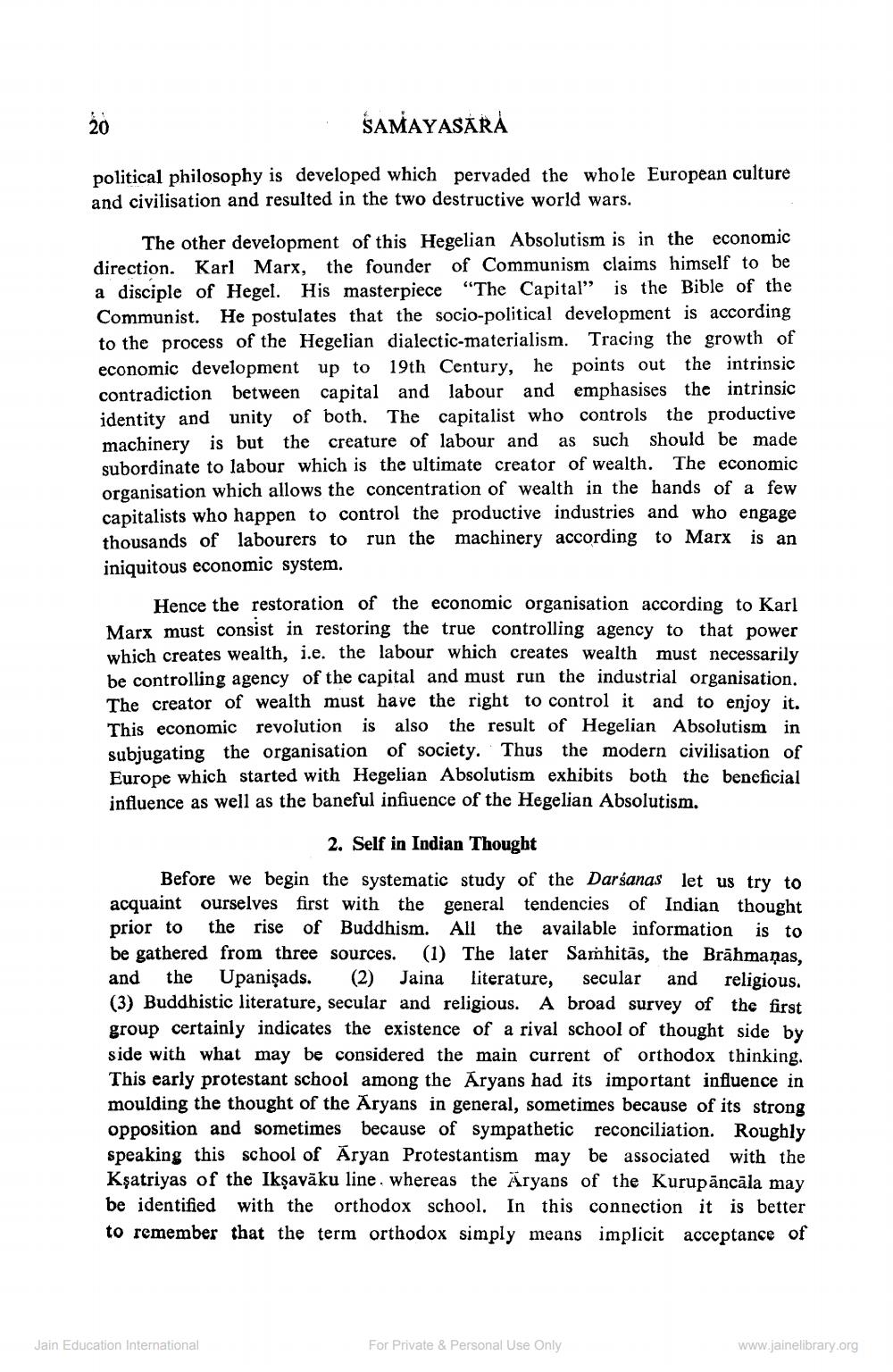________________
SAMAYASARÁ
political philosophy is developed which pervaded the whole European culture and civilisation and resulted in the two destructive world wars.
The other development of this Hegelian Absolutism is in the economic direction. Karl Marx, the founder of Communism claims himself to be a disciple of Hegel. His masterpiece “The Capital” is the Bible of the Communist. He postulates that the socio-political development is according to the process of the Hegelian dialectic-materialism. Tracing the growth of economic development up to 19th Century, he points out the intrinsic contradiction between capital and labour and emphasises the intrinsic identity and unity of both. The capitalist who controls the productive machinery is but the creature of labour and as such should be made subordinate to labour which is the ultimate creator of wealth. The economic organisation which allows the concentration of wealth in the hands of a few capitalists who happen to control the productive industries and who engage thousands of labourers to run the machinery according to Marx is an iniquitous economic system.
Hence the restoration of the economic organisation according to Karl Marx must consist in restoring the true controlling agency to that power which creates wealth, i.e. the labour which creates wealth must necessarily be controlling agency of the capital and must run the industrial organisation. The creator of wealth must have the right to control it and to enjoy it. This economic revolution is also the result of Hegelian Absolutism in subjugating the organisation of society. Thus the modern civilisation of Europe which started with Hegelian Absolutism exhibits both the beneficial influence as well as the baneful infiuence of the Hegelian Absolutism.
2. Self in Indian Thought Before we begin the systematic study of the Darśanas let us try to acquaint ourselves first with the general tendencies of Indian thought prior to the rise of Buddhism. All the available information is to be gathered from three sources. (1) The later Samhitās, the Brāhmaṇas, and the Upanişads. (2) Jaina literature, secular and religious. (3) Buddhistic literature, secular and religious. A broad survey of the first group certainly indicates the existence of a rival school of thought side by side with what may be considered the main current of orthodox thinking. This early protestant school among the Aryans had its important influence in moulding the thought of the Aryans in general, sometimes because of its strong opposition and sometimes because of sympathetic reconciliation. Roughly speaking this school of Aryan Protestantism may be associated with the Ksatriyas of the Ikşavāku line, whereas the Aryans of the Kurupāncāla may be identified with the orthodox school. In this connection it is better to remember that the term orthodox simply means implicit acceptance of
Jain Education International
For Private & Personal Use Only
www.jainelibrary.org




